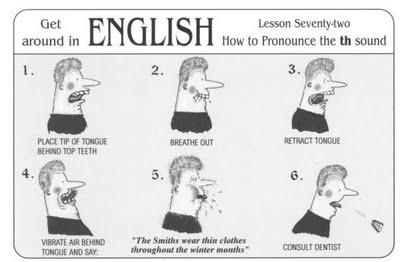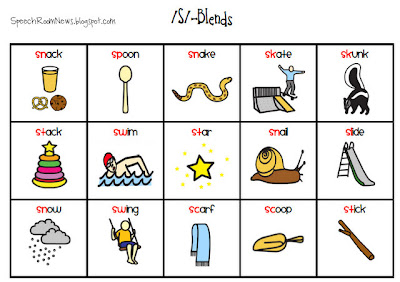Solving Phonology Problems
- Prezi presentation
- Class recordings of Question 1 and Question 2 Page 49.
- Prezi-- rule writing
image credit: http://walkinthewords.blogspot.com/2010/01/pronouncing-th-sound.html


Excerpted from http://linguisticmystic.com
A tale of two TH’s
Say “This thistle” a few times. Now, pay very close attention to the
TH sounds at the beginning of each word. Put your hand on your Adam’s
Apple (or equivalent area on your neck) while you say them.
After a few tries, you’ll notice that, in the words of a friend of mine,
the “TH” in “This” is “more buzzy”, or, put more scientifically,
voiced. This sound, the TH in “This, That, The, There, Then, Those…”,
is called an Eth (pronounced with a voiced, Eth sound). In the
[[International Phonetic Alphabet]] (IPA), it has this symbol:

The TH in “thistle”, or “theater, theory, think, thought, throw, through…” is called a Theta, and is Eth’s voiceless counterpart (Theta is to Eth as T is to D). Theta’s IPA symbol is, shockingly, a theta, as shown here:

Aside from voicing, there is no difference between them. The sounds are produced with the tongue in the same position, the tongue is doing the same thing for both, and all the other various phonetic phactors (I couldn’t resist) are the same. The only difference between the the Theta and the Eth is vocal fold vibration, but what a difference it makes.
http://www.assyrianvoice.net/forum/index.php?topic=38498.0
http://fdaroz.com/search/?q=uj+vowel+chart+english+php